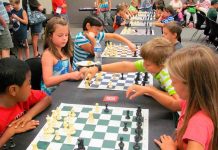МБОУ Екатериновская cош
THEATRES IN ROSTOV – ON — DON
Разработка урока по английскому языку в 11классе
Учитель английского языка
БЕДИРХАНОВА М.Б.
2014 – 2015 учебный год
Урок по теме « Театры Ростова-на-Дону»
УМК: Кузовлев В.П. и другие Класс: 11
Цель урока: развитие коммуникативной компетенции учащихся на основе изученных лексических единиц, речевых и грамматических структур и привитие любви и уважения к театру и культурным памятникам своего края и страны.
Задачи урока. Развивающие задачи: 1. Развитие способности осуществлять продуктивные речевые действия (умение пользоваться речью: монологической, диалогической); 2. Развитие памяти, речи и внимания;
Воспитательные задачи: 1. Воспитание чувства любви и уважения к искусству и родному краю. 2. Воспитание уважения к памятникам культуры.
Учебные задачи: 1. Развитие лексических навыков на уровне свободного высказывания в виде монологической и диалогической речи. 2. Развитие умения читать и аудировать с нахождением конкретной информации и полным пониманием содержания текста.
Оборудование: компьютер; мультимедийный проектор, Оснащение урока: Презентации «Большой театр», «Театры Ростова-на-Дону» «Знаменитые актеры и актрисы из Ростовской области»; листы с текстом о театрах в Ростове – на –Дону
План урока
1. Приветствие. Сообщение цели урока, темы. Речевая разминка.
II. Основная часть урока.
1. Аудирование текста о Большом театре ( презентация). T: What do you know about the Bolshoi theatre?
Task1. Listen to the text and put in the missing words and dates. (Учащиеся заполняют пропуски в задании на листе. Затем просматривают презентацию)
2. Reading for specific information and for detail. (Презентация) T: Can you name the main theatres in Rostov – on- Don? Have ever been there? What was the performance? Task1. Answer the questions. Task2. Agree or disagree.
Презентация о знаменитых актерах и актрисах из Ростовской области.
3. Диалогическая речь. Составление диалогов по ситуациям. (Проверка домашнего задания) Dialogues: 1 Situation: your friend and you are planning how to spend the evening. 2. Situation: You and your friend are discussing the film you’ve seen. You liked everything about the film and you enjoyed the acting. Your friend has a different opinion of the film.
4. Просмотр фрагментов фильмов на английском языке и определить жанр фильма.
III. Заключение.
Объяснение домашнего задания. Выставление оценок. Подведение итогов урока.
Ход урока:
I. Приветствие.
T: Good morning, boys and girls! I’m glad to see you. P: Good morning, teacher! We are glad to see you too. T: Sit down, please!
Сообщение цели урока, темы. Речевая разминка.
Teacher: What was your first reaction when you were told that you would go to the theatre? Where did you go and when was it? What was the performance about? What were your impressions? How do you think what is the theme of our lesson? P: I think we are going to speak about the theatre. T: You are right. Today we’ll introduce with the Bolshoi Theatre and the theatres in Rostov-on-Don. Theatre is a place where you can see a play staged. It is also one of the entertainments. We are to admit that theatre is not popular now as it used to be. But still there are hundreds of theatres where the audiences are excited at the prospect of seeing a play and the actors are most encouraged by the warm reception. What can you say about the difference between the cinema and theatre? Possible answers: Audience: react, applaud, admire, theatergoer. Performance: play, ballet, opera, operetta. People: actors, directors, dancers, singers, stage manager. Parts of the theatre: theatre hall, stage, balcony, gallery, box, curtains, stalls, orchestra pit, dress circle, box-office. Emotions: admiration, enjoyment, disappointment, suspense.
II. Основная часть урока.
1. Аудирование текста о Большом театре (презентация). T: What do you know about the Bolshoi theatre? Have ever been there? What famous actors and actress of the Bolshoi theatre do you know? Now listen to the text about the Bolshoi theatre and then do the task.
The History of the Bolshoi Theatre The company of the Bolshoi was originally founded in 1776 by Prince Peter Urusov and English impresario Michael Maddox as the Moscow Public Theatre. Maddox became the sole owner in 1780, and a building was constructed for the company on Petrovskaya (now Teatralnaya) Square, on the site of the present theatre. Fire destroyed the building in 1805, ruining Maddox and bringing the theatre under State control, to be renamed the Imperial BolshoiTheatre. In 1824 Petrovskaya Square was rebuilt in the Classical style, with a new building for the theatre, designed by architects Andrei Mikhailov and Osip Bove. The modern building of the theatre was opened on 18 January, 1825 as the Bolshoi Petrovsky Theatre. At the time it was second only to La Scala in size, with a 2,200-seat auditorium. The Bolshoi Theatre is a historic theatre in Moscow, which holds performances of ballet and opera. The main building of the theatre, rebuilt and renovated several times during its history, is a landmark of Moscow and Russia (its iconic neoclassical facade is depicted on the Russian 100-ruble banknote). After the Second World War, the Bolshoi became a dominant force in ballet not just in Russia but throughout the world, producing star after star including ballerinas Galina Ulanova, Mayia Plisetskaya, and Ekaterina Maksimova, and male dancers such as Vladimir Vasiliev and Maris Liepa. On 28 October 2011, the Bolshoi was re-opened after an extensive six-year renovation. The Bolshoi Theatre is a legend and a part of the history of Russia. The hall of the Bolshoi Theatre is beautiful; the balconies are surrounded by gilt up to the ceiling. The ceiling is painted, beautiful chandeliers hangs everywhere. One room is devoted to the history of Bolshoi Theatre. It presents the costumes of the actors, the libretto and photos of posters and scenes from plays, dating from the 19th century.
Task1. Listen to the text and put in the missing words and dates. (Учащиеся заполняют пропуски в задании на листе. Затем просматривают презентацию)
a) The first building of the Bolshoi theatre was built in …… b) The founder of the theatre was English impresario …… c) The theatre was built on … Square. d) The designers of the Bolshoi theatre in 1825 were ….. e) The main building of the theatre was rebuilt and renovated …….. times. f ) In …….the Bolshoi was re-opened after an extensive six-year renovation.
2. Reading for specific information and for detail.
a) T: Can you name the main theatres in Rostov – on- Don? Have ever been there? What was the performance? Now read the text about the Rostov theatres and find information to do the tasks.
Учащиеся читают текст, делают задания после текста, а затем просматривают презентацию о театрах Ростова.
THE ROSTOV THEATRES
The first Theatre in Rostov made of stone, was built by Asmolov in 1883 on Taganrogsky Avenue (Budyonovsky), not far from the present day House of Officers. The construction of the Rostov Theatre of Drama was an outstanding event in the cultural life of our city. It was built in 1934-1935 on the waste land separating Rostov and Nakhichevan. The majestic building was created out of metal, concrete and glass in the form of a tractor and impressed everybody with its beauty and grandiosity. At the time it was built, it was the largest Theatre in Europe. The Theatre opened its doors in November of 1935. The first performance staged at the Theatre was “The Optimistic Tragedy” by Vs. Vishnevsky. The Theatre building was destroyed by fascist occupants and in 1963 the building was restored. Achievements: In 1976 the theatre got the Stanislavsky Award for “And Quiet Flows the Don” by Mikhail Sholokhov’ novel; in 1995 – the First Prize of the National Drama Festival for Alexander Pushkin “Little Tragedies”.
The theatre is an initiator and host of the National Russian Comedy Festival The Rostov State Musical Theatre has probably the best-equipped state-of-the-art opera house in the whole of Russia, and its white marble, grand-piano shaped building is home to thrusting young opera and ballet companies. The first mentioning of the Rostov State Musical Theatre dates back to the 19th century. The year 1919 is considered to be the official birth date of the theatre. 80 years later, in 1999 a new page in the life of the theatre was started as the theatre united ballet, opera and musical comedy. The theatre is proud of its artistic ties with the world-known outstanding musicians. The Rostov Young Spectator’s Theatre. This theatre’s history begins since 30th March 1894. The Society of Dramatic Art lovers addressed the Duma with the request to build a theatre. The theatre was being built four years and two months. It was opened on 16th December 1899, but inside decoration of interior was finished in 1907. The Young Spectator’s theatre was founded in 1963. In 2001 the theatre was renamed into Rostov Regional Academic Youth Theatre. Since 1985 Vladimir Chigishev, the director, has been the chief manager of the theatre.
On a quiet university by-street, there is a small building containing a Puppet Theatre. We are proud of it because it gives enjoyment to our children and teenagers. At the end of the 1920’s, a group of puppet actors performed at the theatre for the young audience. It opened its doors for spectators first in 1935. The first performance staged at the Theatre was “A Brave Tailor”, by Brothers Grimm. The Theatre stages performances for children speaking about the main values of life. Some generations of the Don District citizens grew on its performances. Being adults they take their children and grandchildren to the theatre of their childhood.
Task1. Answer the questions. 1. When was the first Theatre building in Rostov built? 2. What is the main theatre in our city and when was it built? 3. What does the Drama Theatre look like? 4. What does the State Musical Theatre look like? 5. When did a Puppet Theatre open its doors and what was the first performance? 6. What does the theatre pay attention to?
Task2. Agree or disagree.
1. Our Drama Theatre is older than the Young Spectator’s Theatre. 2. All the theatres of Rostov were situated on the territory of Nakhechivan. 3. Buildings of the Drama Theatre, the Young Spectator’s Theatre, the State Musical Theatre and the Puppet Theatre are built in the same style. 4. The building of the Drama Theatre is of great architectural value. 5. The director and manager of the Young Spectator’s Theatre is J.Cab. 6. The Drama Theatre organized the National Russian Comedy Festival 7. The Puppet Theatre shows only plays for little children. 8. The Puppet theatre is supervised by V. Chigishev.
b) T: We can be proud not only of our theatres, as you know some famous people lived and worked in our region. Now we’ll introduce with the people who glorified our region. Some of them are well-known all over the world. (Учащиеся просматривают презентацию «Знаменитые люди из Ростовской области» и знакомятся с некоторыми биографическими данными этих людей) Have you seen the films where these outstanding people starred? Name them, please. Did you like how they played their roles? What was the film about?
3. Диалогическая речь. Составление диалогов по ситуациям. (Проверка домашнего задания) Dialogues: 1 Situation: your friend and you are planning how to spend the evening. 1— What shall we do tonight? — Why don’t we go to the cinema? — Yes, we could, I suppose, but there aren’t really any good films on at the moment — Well, what do you suggest then? — How about going to the theatre? — That sounds good. Do you have any particular performance in mind? — Well, they say Merry Widow is very good. It’s playing at the Rostov State Musical Theatre. — Merry Widow? That’s an operetta, isn’t it? — I think so. – That’s OK by me. And why not go to a restaurant afterwards? — Yes, that’s a marvelous idea!
2 – Shall we see a film this evening? — That would be delightful. I haven’t seen a film in many weeks. –How about watching Star Wars this evening? — Well to tell the truth, I don’t like science fiction movies. – Oh, well, is there any particular movie you’d like to see? — How about A Disco Dancer? I heard it’s excellent. — I can’t bear Indian films. Do you like musicals? — Yes, especially, Cats by Andrew Lloyd Webber. – We haven’t a chance to see Cats, but I can propose you to watch We Are From Jazz . – All right. I don’t mind. Would you like to go out for a meal then? — Yes. That’s a splendid idea. Now I’ll go to buy tickets. See you at 6 p. m.. –Bye. Phone me.
3. — Guess what? They’re showing (название фильма) with (актер фильма) on TV tonight. – Are they really? Oh, I must watch that. If there’s one actor I love watching it’s (имя актера) — Yes, so do I, especially when he’s playing opposite (имя актрисы) — (имя актрисы) ? Oh, I can’t stand her! — Can’t you? But why not? — I don’t know. I just don’t like the way she acts, that’s all. – But she was a very good actress! — You must be joking! — No, I’m not. I really like the way she acts. Anyway, I’d much rather watch (название фильма) than the opera or ballet. – You are not serious, are you? You really mean to say that you’d prefer to watch (название фильма)? — Yes, any day. – Well… if that’s sort of film you enjoy watching then all I can say is that I don’t think very much of your taste! I shall watch the opera.
2. Situation: You and your friend are discussing the film you’ve seen. You liked everything about the film and you enjoyed the acting. Your friend has a different opinion of the film.
1. – ……, you’ve seen Lord of Rings haven’t you? — Yes, that’s right. – What do think of it? — Well, I was a bit disappointed, really. I didn’t think it was a particularly good film at all. – Oh, I disagree, …… I thought it was great. It’s one of the best films I’ve ever seen. I enjoyed every minute of it. – I think it was pretty boring. – I really can’t agree with you there,….. I don’t see how you can say it was boring. It was full of excitement. – In my opinion, I was bored… mainly because I was expecting so much more to happen, I suppose. – Oh, come on! A lot happened. It’s really exciting. You are the first person I’ve met who hasn’t enjoyed the film. – Tastes differ, you know.
4. Просмотр фрагментов фильмов на английском языке и определить жанр фильма, назвать фильм и актеров.
III. Заключение.
T: Thank you for your work. Your homework is … Your marks…… Next lesson we’ll continue discussing about theatre and films. It’s a pity that we haven’t a chance to visit theatre, because we live far from the city. But I hope when you enter the institute in Rostov-on- Don you’ll visit it.
Литература:
1. О.В.Наговицына. Поурочные разработки по английскому языку к учебнику В.П. Кузовлева « Английский -10-11», Москва»Вако», 2006г.
2. В.В.Трофимова. Поурочные планы по учебнику «Английский язык 10-11» под редакцией В.П.Кузовлева, Волгоград, «Учитель-Аст», 2004г.
3. «My Native Land, I Love You!» Румянцева И.В., Заварская Т.Н. и Близнюк Г.У. г. Ростов –на – Дону, 2005г.
Пояснительная записка Был дан открытый урок в 11классе для администрации школы по теме « Театры Ростова – на –Дону» по разделу № 6 «Как сделать жизнь нескучной?» по нравственно-эстетическому направлению. В 11 классе 11 обучающихся: 3 отличника, 4 хорошиста и 4 слабоуспевающие учащиеся. Они занимаются по учебнику В.П.Кузовлева и другие «Английский 10-11».Тип урока комбинированный. Цель урока —развитие коммуникативной компетенции учащихся на основе изученных лексических единиц, речевых и грамматических структур и привитие любви и уважения к театру и культурным памятникам своего края и страны. Исходя из цели урока, я отбирала материал, формы и методы обучения. Хотела познакомить их с миром искусства и театра, так как из-за отдаленности от города, у них нет возможности посетить театр. Болшинство детей в наше время предпочитают смотреть телевизор или пользоваться компьютером. Некоторые, представления не имеют, что из себя представляет театр. Выбор методов, приемов и средств обучения соответствует содержанию учебного материала, поставленным целям урока, учебным возможностям данного класса, соответствует методическому аппарату урока, каждому его этапу и задачам активизации учащихся. Уместно использовала дидактический раздаточный материал и технические средства обучения. 1этап урока: приветствие и сообщение темы урока. Pечевая зарядка: повторение лексики предыдущых уроков и введение в тему урока. 2 этап: основная часть урока -1. Аудирование текста о Большом театре. Учащиеся знакомятся с историей просхождения Большого театра. Задача задания – проверить понимание учащимися содержания текста и нахождения нужной информации для выполнения задания. Познакомить их с самым красивым и знаменитым театром не только в России, но и в мире. Учащиеся справились с заданием. 2. Чтение текста о театрах Ростова-на-Дону. Задача – чтение с целью полного понимания текста и привитие чувства любви к искусству и театрам родного края. На предыдущих уроках я знакомила их с некоторыми фактами из истории создания театра в Ростове-на-Дону.. В этом тексте учащиеся продолжают знакомство с 4 главными театрами Ростова-на-Дону. Они также знакомятся с выдающимися людьми театра и кино, которые родились или жили в Ростовской области и прославили ее. 3. Диалогическая речь. Учащимся было дано задание на дом составить диалоги по ситуациям, предложенным учителем. Дети прекрасно справились с заданием. Они использовали лексику, речевые и грамматические структуры, изученные на предыдущих уроках. В основном обучающиеся работали активно, за исключением троих учащихся. Дети проявляли интерес к теме урока, хорошо подготовили диалоги. Урок носил познавательный характер, поэтому учащимся было интересно узнавать некоторые факты из истории театра своего края. Я старалась соблюдать нормы педагогической этики и такта, чтобы учащиеся чувствовали себя свободно на уроке. Я считаю, что я достигла своей цели.





